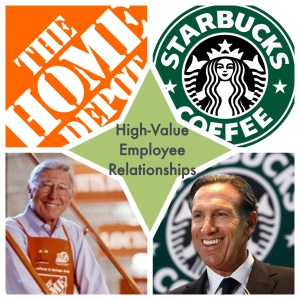I spoke to a first year teacher yesterday who is going through her first "Spring Saga," with all of the ingredients to ruin the quality of learning in the school.
The district has announced plans to cut budgets and positions, so teachers are murmuring about organizing a strike. A few of the students in her class are moving on Friday because of family dynamics, and they are heartbroken to leave their beloved teacher. One of the other teachers in the same grade is having complications from pregnancy and will have to remain in bed, so the administration is splitting up the class among the other classrooms--that means five new students to get ready for standardized testing in a few weeks.
Whew! That's a tough scenario for anyone and the more serious risks are for the students.
School culture often suffers a big hit this time of year. Decisions about contracts and plans for next school year, teacher and student fatigue, spring fever kicking in, graduation looming on the horizon, and so on. It's so easy to start shutting down, yet every one in the school and/or district knows the impact of faculty engagement on student performance and growth.
Who are some leadership examples to consider when it comes to employee engagement?
Two particular CEO's achieved remarkable success because of their high functioning communication skills which helped them build an unusually strong employee culture with thousands of people across many locations. They are masters of employee engagement that serve as models for school leaders (and any leader for that matter) to consider.
Bernie Marcus
Bernie Marcus was 49 years old when he started the Home Depot with Arthur Blank after they were both fired on the same day by the board of their previous employer. The story of his rise to success and fortune is well-documented, but I believe what made him so effective as a leader was his ability to connect and talk with his employees.
So many of the old timers from Home Depot talk reverently about their love and respect for Mr. Marcus. The orange apron became a symbol of the personal service that was championed by their now retired CEO. He would often go into the stores and have one-on-one conversations with employees, getting to know them beyond their work responsibilities. He also hosted "town hall" meetings where they discussed issues of economics, free enterprise, and civic duties. Mr. Marcus modeled a communication style that is missing from too many campuses today, and it started with his genuine care and his courage to engage with each person where they worked.
Howard Schultz
Howard Schultz is another active CEO who has established a culture of strong employee engagement. Not one to fear the hot topics, race relations is now the focus for Mr. Schultz, leveraging his influence with communities across the U.S. to challenge assumptions and create a dialogue. With encouragement from their CEO, Starbucks employees now have the option to start a discussion about race with customers.
In a 2009 interview, Schultz differentiated Starbucks' mission: "We're not in the business of filling bellies--we're in the business of filling souls." That distinction is at the core of the company's culture, connecting with people in a meaningful way while using warm drinks and goodies as the bait.
Can something similar be said about your school: "We're not in the business of filling minds--we're in the business of inspiring souls."
Consider these examples of leadership as you seek to build momentum and engagement on your campus all the way to the end of the school year.












